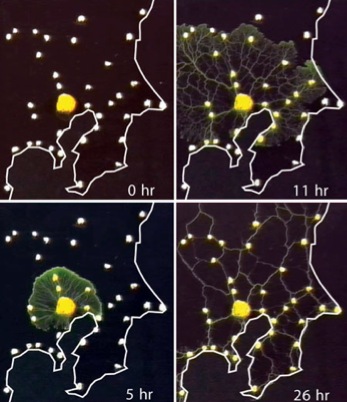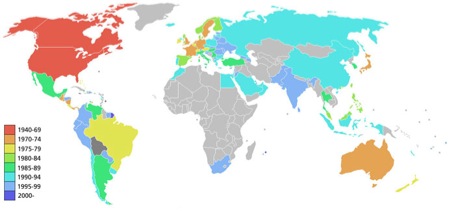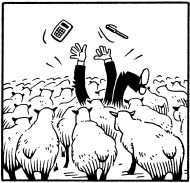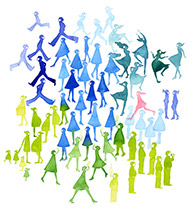The biologists are evolving!
What will they become? Memeticists?
The story: culture is becoming recognized as one of the significant evolutionary forces shaping human evolution.
The story: culture is becoming recognized as one of the significant evolutionary forces shaping human evolution.
Movies, editing, attention
02/03/10 12:36 Filed in: patterns
| time
series
Slime mold and the Tokyo subway system
08/02/10 14:59 Filed in: distribution
networks
``It's all about data''
05/02/10 18:55 Filed in: data
NY Times
(2010-Feb-05):
U.S. Scientists Given Access to Cloud Computing
The National Science Foundation and the Microsoft Corporation have agreed to offer American scientific researchers free access to the company’s new cloud computing service.
A goal of the three-year project is to give scientists the computing power to cope with exploding amounts of research data. It uses Microsoft’s Windows Azure computing system, which the company recently introduced to compete with cloud computing services from companies like Amazon, Google, I.B.M. and Yahoo. These cloud computing systems allow organizations and individuals to run computing tasks and Internet services remotely in relatively low-cost data centers.
Full article here.
U.S. Scientists Given Access to Cloud Computing
The National Science Foundation and the Microsoft Corporation have agreed to offer American scientific researchers free access to the company’s new cloud computing service.
A goal of the three-year project is to give scientists the computing power to cope with exploding amounts of research data. It uses Microsoft’s Windows Azure computing system, which the company recently introduced to compete with cloud computing services from companies like Amazon, Google, I.B.M. and Yahoo. These cloud computing systems allow organizations and individuals to run computing tasks and Internet services remotely in relatively low-cost data centers.
Full article here.
The dismalness of the most dismal of sciences
29/09/09 21:18 Filed in: economics
| prediction
Social contagion, a review
17/09/09 20:12 Filed in: contagion
| social
phenomena
Synchronization
09/09/09 23:44 Filed in: patterns
| synchronization
Steve
Strogatz on all things syncful:
A spreadworthy message
05/11/08 19:20 Filed in: contagion
An excellent viral video from a recent political
campaign.
Corporate contagion
05/11/08 19:19 Filed in: contagion
The diffusion of retail establishments
05/11/08 19:17 Filed in: contagion
Identity, Self-Awareness, and Twitter
26/09/08 14:44 Filed in: social
phenomena
From the New York Times Magazine, a great, mutlifacted
article about how we communicate online.
Political book preferences
11/09/08 08:35 Filed in: politics
Amazon has an interactive map of the US showing
which political books are bestsellers as a
function of state. You’ll notice that Vermont is
rather blue.
The end is nigh...
10/09/08 13:27 Filed in: science
As we record more and more information about ourselves
and
everything around us, Chris Anderson argues
in Wired that the end of theory is nigh.
(He’s certainly not the first to do so.)
It’s certainly true that we have moved into an age of
data abundance as far as social sciences go.
It’s worthwhile to simply dive into these streams
of data and look for patterns. Questions will naturally
appear, we will search more, and theories will form.
And while simple theories may not be available for
many problems, we at least have the task of improving the science of description.
everything around us, Chris Anderson argues
in Wired that the end of theory is nigh.
(He’s certainly not the first to do so.)
It’s certainly true that we have moved into an age of
data abundance as far as social sciences go.
It’s worthwhile to simply dive into these streams
of data and look for patterns. Questions will naturally
appear, we will search more, and theories will form.
And while simple theories may not be available for
many problems, we at least have the task of improving the science of description.




